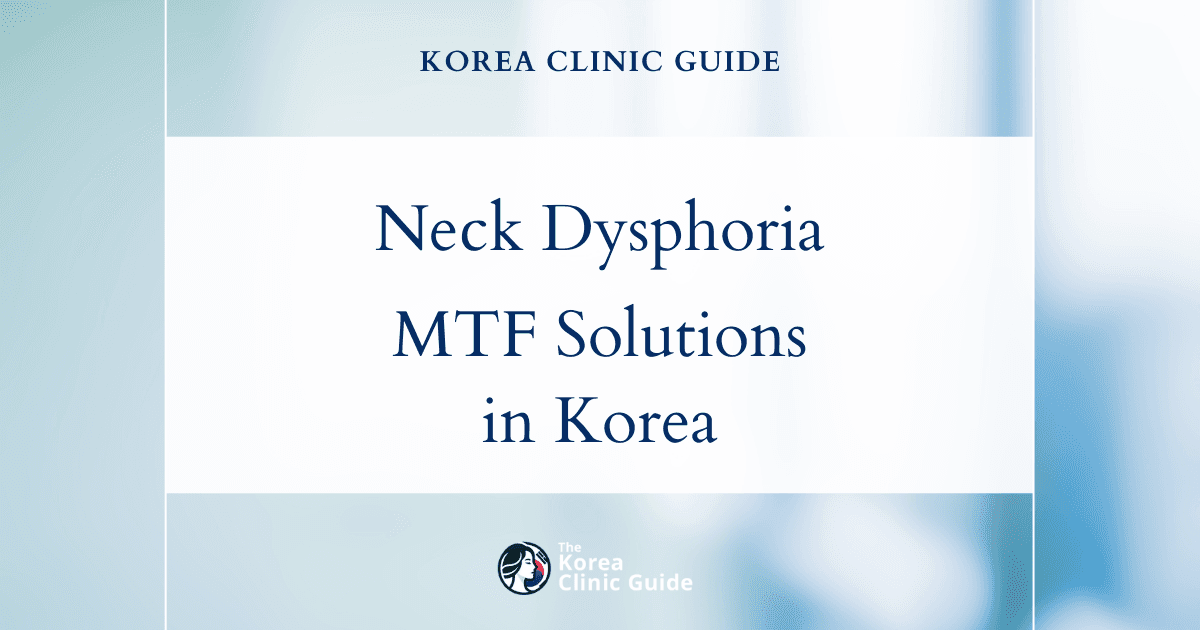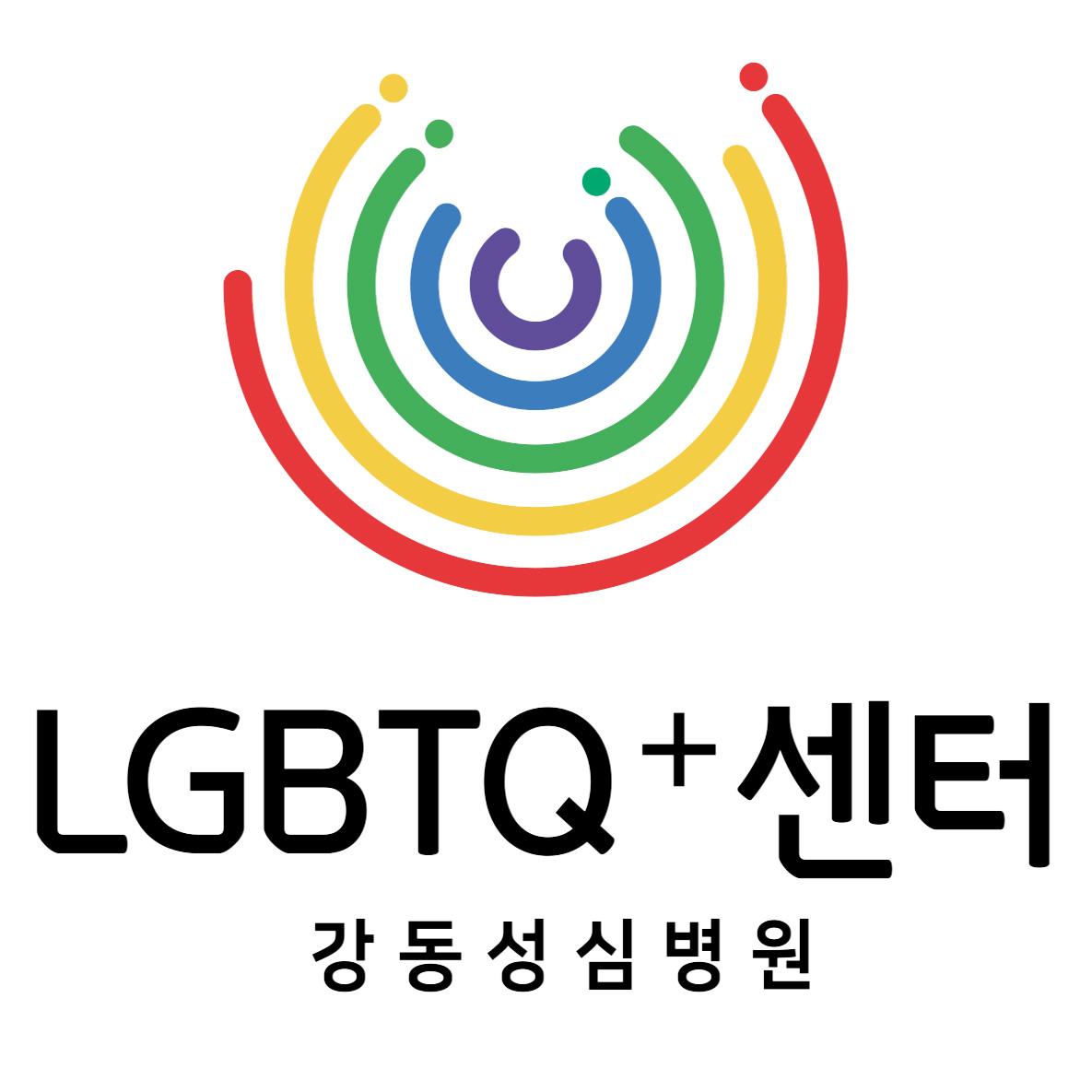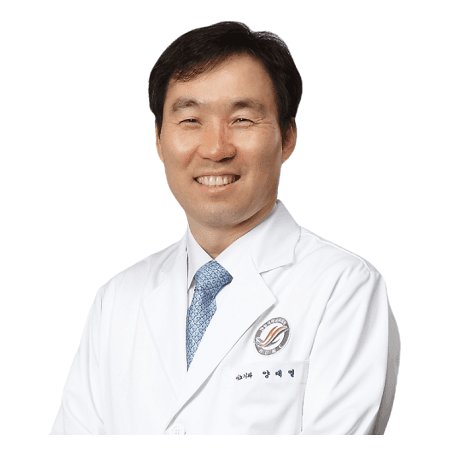Medical Tourism Blog
Standing to Urinate FTM: Phalloplasty in Korea as a Surgical Solution for Transgender Men

Table of contents
- Phalloplasty: A Detailed Medical Overview
- Best Clinics in Korea for Standing To Urinate Ftm
- The Process of Undergoing Phalloplasty in South Korea
- Costs of Phalloplasty: South Korea vs. Global Medical Tourism
- Patient Experiences and Functional Outcomes: Standing Urination After Phalloplasty
- Conclusion
- References
This guide is designed for patients and their advisors considering phalloplasty as a gender-affirming option, especially for those aiming to achieve standing urination. It explores the details of undergoing this surgery as a medical tourist in South Korea, including its benefits, complexities, and costs. For many transmasculine individuals, aligning their physical body with their gender identity is a profound goal—standing urination is a key part of this process and has both psychological and social significance as a major functional objective of gender-affirming genital surgery.
The term "standing to urinate FTM" describes the desire and ability for transmasculine (Female-to-Male) individuals to void while standing, reflecting a common feature of cisgender male anatomy. This ability is critical for many in their gender affirmation journey. Non-surgical aids such as the "STP" (Stand To Pee) device or "stand-to-pee device" are designed for this purpose and are widely used by transmasculine people before, and sometimes instead of, surgery. These funnel-shaped aids, sometimes shaped like a prosthetic penis, are useful in public or unsanitary bathrooms and can help foster bodily congruence and ease in gendered spaces. Learning to use stand-to-pee devices (especially STP packers) takes practice, and many recommend rehearsing at home before using them in public. The popularity and discussion around STPs shows that standing urination is not simply a post-surgical goal but a deeply embedded, immediate need for many, tightly linked to gender identity and societal comfort.
Phalloplasty: A Detailed Medical Overview

The primary aim of transmasculine bottom surgery, or masculinizing genital surgery, is to reconstruct female genitalia into male genitalia, allowing the body to better reflect the patient's gender identity. Specific functional goals include creating a natural-looking phallus with sensation and pleasure, achieving erections (with devices), and—importantly—enabling standing urination.
Phalloplasty involves creating several anatomical structures: the penile shaft, an internal shaft urethra, a perineal urethra to connect the new shaft to the native urethra, a scrotum (scrotoplasty), and often glansplasty (to form a circumcised-looking tip). Commonly, a vaginectomy (removal of the vagina) and burial of clitoral tissue are performed as part of the process.
Phalloplasty Techniques
- Free Flap Phalloplasty: In this method, a skin flap is fully detached (including its blood vessels and nerves) and transferred to the recipient site, allowing for nerve connections that may provide sensation:
- Radial Forearm Free Flap (RFF): Uses tissue from the forearm and is favored for good sensitivity and a natural look.
- Anterolateral Thigh (ALT) Flap: Uses tissue from the thigh, good for thinner patients.
- Musculocutaneous Latissimus Dorsi (MLD) Flap: Uses tissue from the back.
- Fibula Flap: Incorporates bone for structural support.
- Pedicled Flap Phalloplasty: The flap is partially attached at the donor site and repositioned. Sensation is more limited, except in Pedicled ALT Phalloplasty.
- Abdominal Flap Phalloplasty
- Groin Flap Phalloplasty
- Pedicled ALT Phalloplasty
- Tube-within-a-tube Phalloplasty: A flap is folded to form an outer shaft and an inner urethra, often with forearm tissue.
- Composite Phalloplasty: Uses tissue from two sites to create shaft and urethra separately.
- Shaft Phalloplasty: Only the outer shaft is created; urination remains through the native urethra, lowering risk and complexity.
- Metoidioplasty: Uses growth from testosterone-enlarged clitoral tissue to form a small phallus, sometimes including urethral lengthening for standing urination.
Phalloplasty usually requires multiple surgical stages, rarely completed in one session. This phased approach allows physical and emotional recovery, lowers complication risks, and lets patients adapt, reassess, and make choices between phases. The journey may take a year or more, demanding resilience and support.
Common Staging Approaches
- "1-Stage" Approach (Tube-within-a-tube): Phallus and urethra are created together, with additional surgeries later for prosthetics.
- Phallus-First Approach: Shaft and urethra first, then connect to native urethra and perform vaginectomy in a second stage.
- Metoidioplasty-First Approach: Metoidioplasty and initial urethral extension first, then connect to phallic urethra subsequently.
Sample staging can involve up to four stages, often beginning with hysterectomy, followed by different combinations and sequences of phalloplasty, urethral work, scrotoplasty, glansplasty, and prosthetic insertion.
Preoperative Preparation
- Medical Evaluation: Comprehensive testing (e.g., brain MRI, bone density, labs, hormones, X-rays, EKG) to ensure readiness.
- Psychological Evaluation: Requires two letters from separate therapists to confirm gender dysphoria and understanding of risks.
- Medication Management: Adjustments may be needed; typically, patients stop aspirin and certain supplements before surgery.
- Lifestyle Changes: Smoking cessation is strongly advised.
- Hormone Therapy: Testosterone therapy is recommended for masculine features and requires regular medical monitoring. Achieving maximal effect can take one to five years.
The demanding pre- and post-operative requirements emphasize that phalloplasty is not a quick process but a multi-year, medically cautious journey.
Best Clinics in Korea for Standing To Urinate Ftm
Listed below are the best clinics in Korea for standing to urinate ftm:
| Clinic Name | Key Features | Special Techniques |
|---|---|---|
| Kangdong Sacred Heart Hospital | Wide range of specialized medical procedures; State-of-the-art facility; Advanced care in general surgery, orthopedics, neurology, cardiology, oncology, urology, gastroenterology, nephrology; Comprehensive, patient-centered services; Standing to urinate (STU) procedures for FTM (transmasculine) patients; Commitment to transgender healthcare | Appendectomy, knee/hip replacements, craniotomy, coronary artery bypass grafting, mastectomy, prostatectomy, dialysis, procedures enabling standing urination for transmasculine patients |
| Kangdong Sacred Heart Hospital LGBTQ Plus Center | Dedicated hub for LGBTQ+ community; Affirming environment; Multidisciplinary team (plastic surgery, urology, psychiatry, endocrinology); Patient-centered consultations; Pre- and post-operative support; Fertility preservation; Inclusive, stigma-free care; Expertise in complication management; Comprehensive sexual and reproductive health | Advanced gender-confirmation surgeries (phalloplasty, metoidioplasty, urethral lengthening); Standing to urinate (STU) procedures for FTM; Mental health counseling; Hormone therapy management; Management of surgery complications (e.g. urethral strictures, fistulae); HIV/STI prevention; Voice therapy; ENT services |
| PS Beauty Clinic | Premier cosmetic and beauty treatments; Focus on enhancing natural beauty and confidence; Expert staff; State-of-the-art technology; Individualized care; Highly experienced in gender-affirming procedures; Sensitive and discreet consultations; Holistic approach; Support pre/during/post surgery; Internationally accessible with English-speaking staff; Modern, private facilities | Standing To Urinate (STU) surgery for FTM; Advanced, innovative surgical techniques; Comprehensive post-op and supportive treatments; Focus on safety, comfort, privacy |
Kangdong Sacred Heart Hospital
Kangdong Sacred Heart Hospital, located in Cheonho, is recognized for its wide range of specialized medical procedures delivered by a team of highly qualified professionals. The hospital boasts a state-of-the-art facility dedicated to offering advanced care across multiple disciplines, including general surgery, orthopedics, neurology, cardiology, oncology, urology, gastroenterology, and nephrology. With services such as appendectomy, knee and hip replacements, craniotomy, coronary artery bypass grafting, mastectomy, prostatectomy, and dialysis, the hospital demonstrates a deep commitment to comprehensive and patient-centered healthcare.
This commitment extends to the care and support of transgender individuals, including those seeking gender-affirming health services such as procedures that enable standing to urinate for transmasculine (FTM) patients. Kangdong Sacred Heart Hospital’s reputation for excellence, skilled professionals, and advanced medical technologies provides a supportive and safe environment for patients pursuing these specialized treatments in Korea.
Find more about this clinic here: Kangdong Sacred Heart Hospital Website
Kangdong Sacred Heart Hospital LGBTQ Plus Center
Located in Cheonho, Seoul, the Kangdong Sacred Heart Hospital LGBTQ Plus Center is a pioneering medical hub uniquely dedicated to serving the LGBTQ+ community in Korea. The center offers a comprehensive suite of medical, surgical, and therapeutic services designed specifically for transgender and gender-nonconforming individuals, with a focus on respectful, dignified, and holistic care. Patients are welcomed into an affirming environment where diversity is embraced and individualized health needs are met with expert attention. For those seeking options such as standing to urinate (STU) procedures for FTM (female-to-male) individuals, the center stands out for its specialized clinical expertise, integrated patient support, and commitment to best practices in gender-affirming care.
Key advantages of Kangdong Sacred Heart Hospital LGBTQ Plus Center for Standing To Urinate FTM:
- Multidisciplinary Expertise: Offers comprehensive care from plastic surgeons, urologists, psychiatrists, and endocrinologists, ensuring integrated support from initial consultation to post-surgical follow-up.
- Gender Confirmation Surgery: Provides advanced techniques in phalloplasty and metoidioplasty, which include the construction of a neophallus and associated urethral lengthening, enabling standing urination for trans men.
- Patient-Centered Consultations: Counseling and education are prioritized to guide each patient through options for standing to urinate, surgical risks, and post-procedure expectations.
- Pre- and Post-Operative Support: Includes mental health counseling, hormone therapy management, and long-term follow-up for optimal surgical outcomes and psychological well-being.
- Inclusive Environment: Dedicated to respecting every patient’s gender identity, fostering a safe and affirming space where LGBTQ+ individuals can seek care without stigma.
- Fertility Preservation Services: Offers options for fertility preservation before surgical or hormonal interventions, ensuring future family planning choices are respected.
- Expertise in Managing Complications: Clinical teams are equipped to address potential complications from FTM surgeries, such as urethral strictures or fistulae, ensuring continuous and responsive care.
- Comprehensive Sexual and Reproductive Health Services: HIV/STI prevention, voice therapy, and ENT services are all available, allowing for truly holistic care under one roof.
With its advanced surgical capabilities, patient-centric approach, and unwavering commitment to LGBTQ+ health equity, Kangdong Sacred Heart Hospital LGBTQ Plus Center sets the gold standard for FTM individuals seeking standing to urinate procedures and related gender-affirming services in Korea.
Find more about this clinic here: Kangdong Sacred Heart Hospital LGBTQ Plus Center Website
PS Beauty Clinic
PS Beauty Clinic, conveniently located in Gyodae, is a premier medical facility offering a wide spectrum of advanced cosmetic and beauty treatments that focus on enhancing both natural beauty and personal confidence. The clinic is renowned for its expert staff, state-of-the-art technology, and individualized care, making it a top choice for individuals seeking specialized procedures such as Standing To Urinate (STU) surgery for FTM (female-to-male) patients. With a comprehensive suite of services ranging from facial rejuvenation to body contouring, PS Beauty Clinic has built a reputation for excellence, safety, and transformative outcomes.
Why PS Beauty Clinic is the best choice for Standing To Urinate FTM surgery:
- Recognized for its innovative surgical techniques and the use of advanced medical technology.
- Highly experienced and understanding medical team skilled in gender-affirming procedures.
- Discreet, sensitive, and personalized consultations to address each patient’s unique goals.
- A holistic approach to patient care, offering support before, during, and after surgery.
- Comprehensive range of post-operative and supportive treatments, ensuring optimal healing and results.
- Internationally accessible, with English-speaking staff for global patients.
- Clean, modern facilities that prioritize safety, comfort, and privacy throughout the patient journey.
PS Beauty Clinic stands at the forefront of both cosmetic enhancement and gender-affirming healthcare, making it the clinic of choice for FTM individuals in Korea seeking improved quality of life and confidence through Standing To Urinate procedures.
Find more about this clinic here: PS Beauty Clinic Website
The Process of Undergoing Phalloplasty in South Korea
South Korea is recognized internationally for its skill in cosmetic and reconstructive surgery, with surgeons in Seoul excelling in microsurgical and customized procedures. Patients can benefit from advanced technology, personalized surgical planning (including 3D modeling), and globally acknowledged expertise.
Steps for Medical Tourists
- Initial Consultations and Evaluations: Involve specialists across disciplines, mandatory psychological confirmation, and comprehensive health checks before hormone therapy or surgery.
- Hormone Therapy: Male hormones (testosterone) are provided to induce masculinizing changes, with ongoing checkups to monitor for side effects.
- Clinic Selection: Notable clinics include Shinsang Plastic Surgery Clinic, Chiu Plastic Surgery, VIP Plastic Surgery Clinic, Asan Medical Center, Ruby Plastic Surgery Clinic, Kyung Hee University Hospital, and Grand Plastic Surgery Seoul. Decisions are informed by ratings, response rates, and treatment packages, often with 3D planning.
- Legal & Social Barriers: South Korea requires strict legal conditions for change of legal gender (court approval, nonmarital status, age, lack of minor children, sometimes parental consent). There is no comprehensive anti-discrimination law, though interpretations protect some rights. This creates a gap between medical excellence and legal/social support, potentially impacting the overall experience.
- Post-operative Care & Recovery: After microsurgical phalloplasty (RFF or ALT), hospital stays range from 5–7 nights, with more time needed if complications arise. Recovery involves PCA for pain, close monitoring, continued use of catheters, and gradual progression in mobility and activity. Intensive follow-ups and restrictions (including abstaining from sex for 3–4 months) are part of the recovery timeline.
Costs of Phalloplasty: South Korea vs. Global Medical Tourism
In South Korea, phalloplasty costs range from $21,200 to $67,900 USD. The multi-stage Kim FTM Phalloplasty, for example, is about $23,000 USD (Stage One: $10,000, Stage Two: $6,500, Stage Three: $6,500). By comparison, general plastic surgery in Korea can be as low as $3,000–$25,000 USD. Costs typically cover surgery, anesthesia, hospital stays, and care, with some packages including accommodation and transport. Prices depend on the technique, hospital, location (Seoul costs about 20% more), and surgeon expertise—most clinics provide actual prices upon request.
Compared to Western countries, patients can save 40–65% by choosing Korea:
| Country | Estimated Cost Range (USD) | Estimated Cost Range (EUR) | Notes |
|---|---|---|---|
| South Korea | $21,200 – $67,900 | N/A | Example multi-stage ~$23,000 |
| USA | $20,000 – $150,000 | €20,000 – €40,000 | Average ~$29,500 |
| Thailand | $2,560 – $25,000 | €10,000 – €15,000 | Average ~$8,890 |
| Turkey | $3,556 – $16,500 | €6,000 – €9,000 | Average ~$8,000; often includes hotel, transfers |
| Germany | N/A | €15,000 – €25,000 | Known for high-quality results |
| UK | From $8,000 | €12,000 – €20,000 | Similar to other Western countries |
| Singapore | $50,000 – $60,000 | N/A | |
| Mexico | From $8,950 | N/A |
Other expenses include hospital and surgical facility fees, anesthesiology, medications, post-surgical garments, and necessary preoperative tests. Additional costs can accrue for hysterectomy/oophorectomy, travel, accommodations, recovery therapies, and revision surgeries. While South Korea is an innovation leader with competitive pricing, wide variances in phalloplasty pricing and regular "price upon request" policies mean patients must conduct careful research regarding what is included in each package and be prepared for unexpected costs due to possible complications.
Patient Experiences and Functional Outcomes: Standing Urination After Phalloplasty
Standing urination after phalloplasty relies on constructing a functional urethra that reaches the tip of the new phallus. This process blends native urethral tissue with newly constructed tissue—often needing tissue from the vaginal wall and labia minora—and usually requires a vaginectomy for optimal results due to urethral complication risks. Urethral and perineal connections are not completed until 6–9 months post-initial surgery. Catheters are used throughout recovery, and a retrograde urethrogram (X-ray) confirms the new urethra's openness before final catheter removal.
Some opt for "shaft phalloplasty" (creating only the outer shaft without urethral extension) to avoid higher complication rates. Historically, most transmasculine patients seek standing urination, with studies showing 87%–100% success with metoidioplasty and a 79% rate after phalloplasty in transgender male patients.
Complications and Patient Satisfaction
Urethral lengthening remains the most challenging part, carrying risks like:
- Urethrocutaneous Fistula: Leaking urine from the skin (15%–70% of cases).
- Urethral Strictures/Stenosis: Narrowing/blockage, requiring further treatment.
- Hair Growth in Urethra: Can cause infections and blockages.
- Urethral Diverticulae: Pouch formation that can cause discomfort and infection.
Other common issues include post-void dribbling or spraying, less-than-perfect cosmetic results (with additional corrections increasing risk), infection, scarring, lack of sensation, tissue death (less than 1% full failure), nerve damage, decreased sexual satisfaction, and more.
Despite risks, many report high satisfaction, with studies showing 6 out of 7 satisfied with urination ability and aesthetics. For most, the psychological benefit of standing urination outweighs the risks and potential need for revisions, making it vital for counseling to address both surgical details and personal goals.
Conclusion
Phalloplasty provides transmasculine individuals with the opportunity for standing urination—a significant step in gender affirmation—through a complex, multi-stage process. South Korea offers advanced expertise and cost advantages, but requires careful planning and realistic expectations regarding function, appearance, and the high possibility of complications. Engaging with experienced multidisciplinary teams and understanding the long-term nature of recovery are essential for a satisfactory outcome.
References
1, 2, 3, 4, 5, 6, 7, 8, 9, 10, 11, 12, 13, 14, 15, 16, 17, 18, 19, 20, 21, 22, 23, 24, 25, 26, 27, 28, 29, 30, 31, 32, 33, 34, 35, 36










